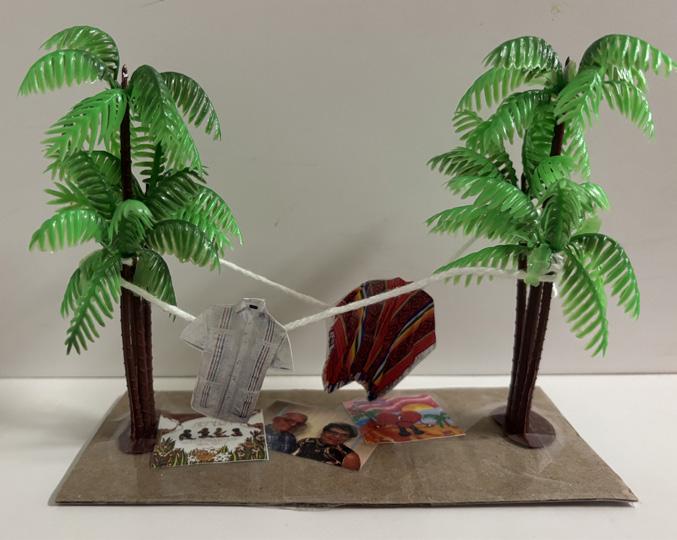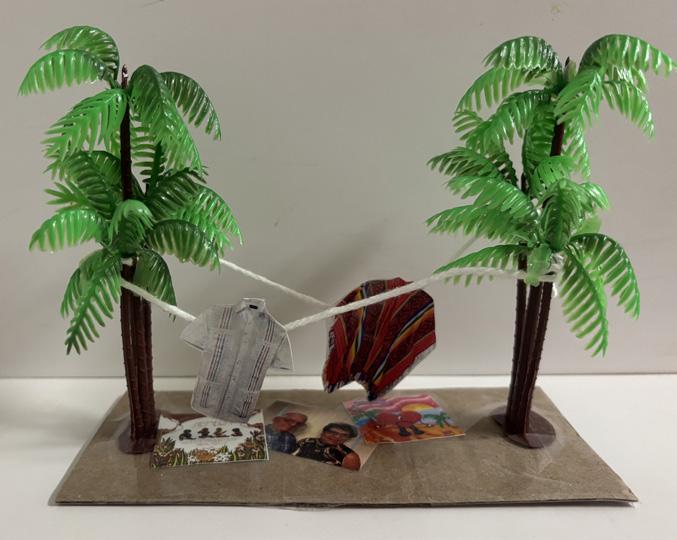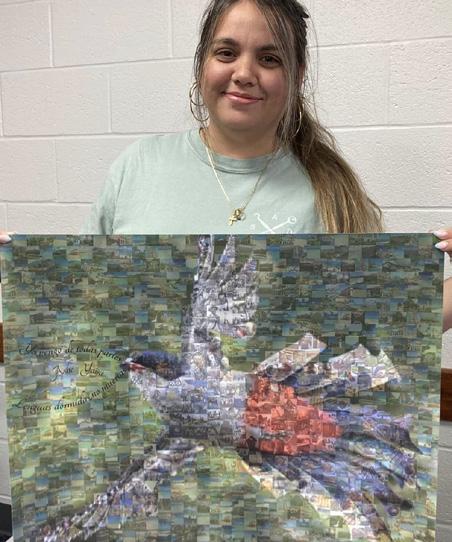
3 minute read
Student Spotlight: Undergraduate class artworks
The undergraduate students of Introduction to Latin American Studies were tasked with developing a culminating art project that evoked an aspect of the Latin American experience, open to the artist's interpretation. On this and the following page are three examples of the students' work: Tendedero, Llamada Perdida, and Wings of Many Roots.
TENDEDERO
Mixed media assemblage
Giovanna Gasparini

This piece reflects the experience of growing up outside of Latin America while remaining immersed in its traditional and contemporary cultures. Symbolic elements like the tendedero (clothesline), palm trees, cultural garments, and scattered images— including music albums and a photo of my grandparents—capture the coexistence of nature and Latin American culture. These come together to illustrate how Latin American culture remains deeply rooted in one’s identity, despite physical distance.
LLAMADA PERDIDA
Interactive installation
Nic Solano

The piece includes a phone, a recording, a notebook, and a pen. By lifting the receiver, the spectator hears a Latin American mother saying the usual things that any Latin American mother tells her son or daughter who is studying in another town. So, the voice becomes the voice of the spectator's own mother. After listening to the recording, the spectators are invited to write on the notebook the feelings provoked by that "lost call."
WINGS OF MANY ROOTS
Digital collage
Damaris Quiñones Rivas

This collage depicts the tocororo, Cuba’s national bird known not only for its vivid colors but for the fact that it cannot survive in captivity, making it a powerful symbol of freedom, identity, and cultural resilience. The piece is built as a mosaic of layered photographs, where each section of the bird represents different elements of Cuban history and collective memory. The head honors language, spirituality, and Indigenous and African roots. The white chest symbolizes migration and displacement journeys made across waters and borders, often marked by separation, hope, and transformation. The red lower belly speaks to pain, loss, and collective wounds the struggles carried through generations. The wings carry resistance, art, and celebration; and the tail speaks to land, food, and everyday life. Surrounding the bird are ancestral words and phrases: Yaya, Ashé, Sleeping languages, not dead, and Martí’s line “Yo vengo de todas partes” (I come from everywhere). This is not just a bird in flight; it is a living archive, built from images, stories, and voices that together express what it means to belong to a culture shaped by memory, migration, rhythm, and resistance. It flies not only through space, but through time carrying everything that refuses to be forgotten.










